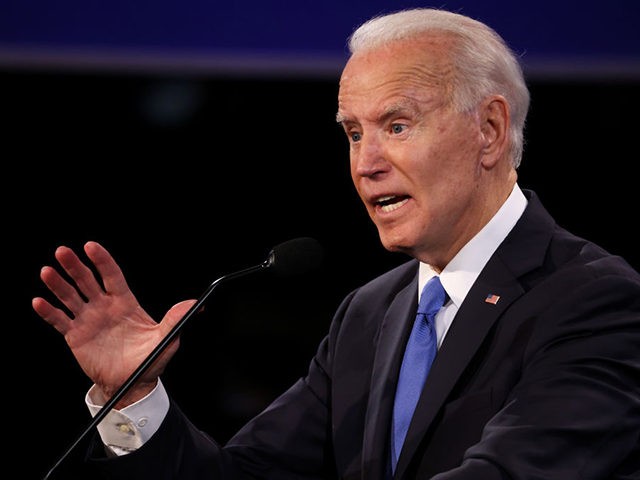CLAIM: Former Vice President Joe Biden (D) claimed during the presidential debate Thursday that U.S. schools are unable to open for in-person learning during the pandemic because “they need a lot of money.”
VERDICT: False.
Biden accused President Trump during a discussion about shutdowns, “Schools, they need a lot of money to open. They need to deal with ventilation systems. They need to deal with smaller classes, more teachers … and he refused to support that money, or at least up to now.”
However, backed by the teachers’ unions that have fueled the school closings, Biden and the Democrats were pushing for billions of dollars in funding in a coronavirus relief bill, much of which was intended to pay for considerably more than personal protective equipment and help with safety issues.
In the spring, at least a dozen teachers’ unions and government school advocacy organizations called for a minimum of another $200 billion in taxpayer funds.
The political action arm of the National Education Association (NEA), the nation’s largest teachers’ union, stated the coronavirus stimulus provided thus far “doesn’t do nearly enough for students and educators—especially in light of school closures, the switch to online instruction, and the intense strain on state budgets we know is coming”:
Now is the time to begin pushing for more funding where we know it is needed: the Education Stabilization Fund to help fill state budget gaps and prevent educator layoffs, closing the “homework gap” experienced by students who don’t have internet devices or access at home, and expanding student loan forgiveness.
A coalition of groups, including the NEA, the American Federation of Teachers, the School Superintendents Association, and the National School Boards Association, wrote to Congress, asserting they needed more funding to address school closures and the interrupted school year caused by the coronavirus:
They’re seeking at least $175 billion to help bolster state education budgets, $13 billion for special education, $2 billion in funding to the E-Rate educational technology program, and $12 billion for Title I to help low-income schools, the groups said.
…
The groups said that, as states face drastic revenue declines, Congress must “acknowledge the need for an unprecedented level of investment.”
Later during the discussion about schools, Biden seemed to turn on teachers who are complaining about returning to in-person learning.
“And by the way, all you teachers out there, not that many of you are going to die so don’t worry about it,” he said.
According to data reported in October by the National Assessment of Educational Progress (NAEP), also known as the Nation’s Report Card, U.S. school children have made “no progress” in reading or mathematics over the past decade while actually attending school.
Additionally, while many government school advocacy groups are claiming the distance learning in which most students are now engaged is inequitable because it favors students from middle-class families who have access to the Internet, the Nation’s Report Card showed the disturbing performance of America’s lower income children after being taught in school.

COMMENTS
Please let us know if you're having issues with commenting.